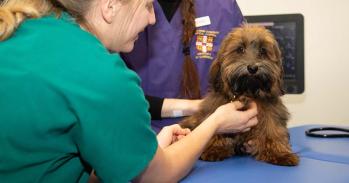
By adopting the principles of natural selection, engineers are using survival of the fittest to breed better design solutions.
By adopting the principles of natural selection, engineers are using survival of the fittest to breed better design solutions.
There is widespread interest in applying these types of optimisation technique to real-world engineering design problems.
An important legacy of Charles Darwin’s theories, unimaginable 150 years ago, has been the development of a thriving field of computational science based around the ideas of evolution by natural selection. Evolutionary computation, as it is known, encompasses a variety of methods, the most well known being evolution strategies, genetic algorithms and genetic programming. All seek to solve challenging optimisation problems (the problem of finding the best solution from all feasible solutions) in a vast range of application areas.
Although the methods differ in the detail of their implementation, they all follow the same basic blueprint: ‘parents’ are selected from a current population of available solutions, with better (fitter) solutions being selected more often; ‘offspring’ are bred by combining portions of the parents’ ‘chromosomes’ (the set of parameters that define the solution); and finally, small random ‘mutations’ are made to the offspring’s chromosomes, analogous to the copying errors that occur in real-world biological reproduction. The end result – the algorithm – can often succeed in solving problems where other methods fail.
Engineering design
The Computational Design Group, led by Dr Geoff Parks within the Cambridge Engineering Design Centre, aims to improve the design process and designed products by developing methods that effectively exploit the potential of computational optimisation to enhance the creativity and decision-making of engineering designers.
The optimisation of an engineering design is usually a multi-objective task: the designer wants to improve several objectives, or attributes, of the design simultaneously. Inevitably these objectives are often in conflict as it’s frequently not possible to improve one objective for an optimised design without making another worse. Evolutionary computation methods can readily be adapted to tackle multi-objective problems. In so doing, they identify the trade-off surface – the set of solutions for which it is impossible to improve one objective without another deteriorating – allowing the designer to make a fully informed choice of final design.
There is widespread interest in applying these types of optimisation technique to real-world engineering design problems. Researchers in the Computational Design Group are using evolutionary computation to tackle a diverse range of design optimisation problems: from improving hybrid electric vehicle drive systems; to trading off reduction in pollutants and noise in aeroengines; to designing cheaper, more compact space satellites.
Selective breeding
Developing evolutionary algorithms that perform well on particular applications can pose challenges. It is not always straightforward to find a suitable way to encode designs ‘genetically’ such that when two good solutions are combined there is a reasonable chance that the characteristics that made them good are preserved in their offspring. Interesting research questions under investigation by the group also surround the issues of how parents are selected. In a virtual world, one can try schemes that would be physically or ethically impossible in the real one. The rules of the game can change too: for instance, the group has found that, in multi-objective optimisation problems, genetic diversity is often naturally maintained in the population as it spreads out across the trade-off surface and therefore highly selective breeding schemes in which only the best solutions are allowed to reproduce can be very effective.
By adapting the principles of Darwinian evolution, we can develop methods that enable engineers to design better submarine propulsion systems or nuclear reactor reload cores or… in fact, the potential applications are about as diverse as the natural world itself.
For more information, please contact the author Dr Geoff Parks (gtp10@cam.ac.uk) in the Engineering Design Centre at the Department of Engineering. Much of the group’s research is supported by the Engineering and Physical Sciences Research Council (EPSRC).
This work is licensed under a Creative Commons Licence. If you use this content on your site please link back to this page.





